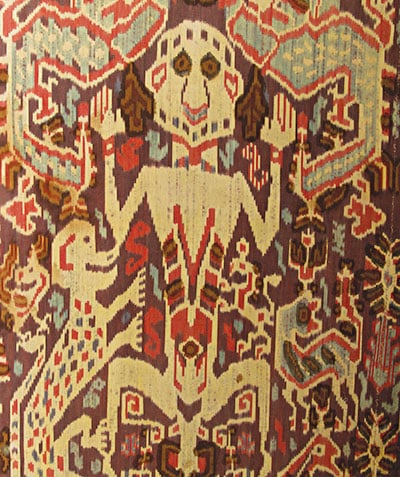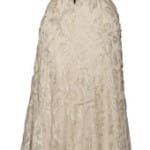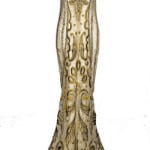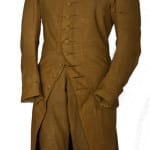Buying and Selling Vintage Clothing at Auction
By Karen Augusta & Bob Ross
Once overlooked by museums and appraisers alike, “vintage” now occupies an increasingly significant position in the world of valued antiques and collectibles. Museums are dusting off the objects that once merely occupied space in their backrooms and are using them to draw record crowds to their institutions -through costume exhibits and retrospective displays of important designers.
Clothing defines a person’s unique style and nearly everyone owns and holds on to a few favorite outfits that reflect who they are or once were. Many articles end up stored in the back of closets or in boxes and trunks in an attic, sometimes for multiple generations. While most people don’t own rack upon rack of “museum quality” vintage, there is surprising value to be found in the treasures that many families have retained.
The term vintage is a reference to Grand Cru, a French designation for vineyards of the highest quality. Its association with clothing began in 1971 with the Paris runway introduction of the spring/summer collection by French designer Yves Saint Laurent. At the time, his clothing ó heavily influenced by a 1940s wartime look ó created an uproar in the fashion world.
Despite the negative reviews of Saint Laurent’s collection in fashion publications, this show brought respectability to “vintage” and forever cemented the connection of an era’s classic looks to high fashion. Other designers soon began to purchase vintage to influence their collections and the “retro” look was born. Hollywood starlets and other celebrities frequented vintage fairs and stores and made vintage their “go-to” look.
Because of the fragility of textiles, and the need to keep them stored away from temperature/moisture variation and insect attack, those that remain in good condition for decades or centuries are most valued. Garments from a famous designer, those worn by a famous person or iconic pieces that instantly reflect a bygone era all attract competitive bidding at auction.
While most auctioneers in the past avoided tackling the sale of clothing, increased awareness and higher sale prices have introduced additional opportunities to buy at auction. Mentions of vintage/couture clothing and antique textiles appear more and more in auction advertising from traditional estate auctioneers. These auction houses provide an excellent opportunity to purchase quality objects at reasonable prices but, as the old adage states, “Let the buyer beware.”
For investment, a garment should be in very good to excellent condition. Are you able to inspect the lot in advance or can you have a friend preview the sale for you? Hold the garment up to the light and look for pinholes or other signs of damage. Look over the garment for spotting or staining. Check the seams and hemlines to see if the garment has been altered. Items that are correct and in excellent condition, or others to be repaired or repurposed, can be excellent values at auction.
The word “couture” in an auction description is a frequent giveaway that all items at a particular sale may need closer inspection. The cataloger may not possess the expertise to describe items accurately. They may be using “couture” as an indication that a fashion object appears valuable or once cost a lot of money. That is not the true meaning of couture and definitely not a good indicator of current collectibility.
“Haute Couture” describes a garment made entirely by hand for a specific client. It is usually, but not always, accompanied by an extra tape with a numerical code. Only a very small percentage of designers each year meet the strict requirements of the Chambre Syndicale de la Couture. Calling a garment “couture” is like calling any leaded glass lamp “Tiffany.” Auction houses with a clothing expert on staff should be able to determine if a collectible garment is “right.” Untrustworthy sellers might add a couture label on a ready-to-wear garment or not know if a piece has been altered or repaired. These details all affect value.
Kerry Taylor, from London (www.kerrytaylorauctions.com), holds four or five sales annually for vintage collectors. Her past catalogs are archived on the website and are a great resource.
The Paris Auction venue Drouot has a general listing of upcoming sales (www.drouot.com/static/vente/calendrier) with many specialty vintage sales included in the list. An established fashion auction house, Chombert & Sternbach (chombert-sternbach.blogspot.com), list their sales through Drouot and items are available for bidding online.
Augusta Auction Company, (www.augusta-auction.com) holds three vintage and historic clothing sales each year in New York City and Massachusetts. All of their current auction lots and archived items from many years of fashion sales are accompanied by numerous images and close up details. The extensive database is searchable on their website by category, designer or era. Over 20,000 people search the site each month to learn about historic fashion and textiles.
The vast amount of information about vintage and resources available to collectors insure a strong market well into the future for this field of collecting. With expanded awareness of fashion in general, and many options now available for new buyers to learn about historic fashion and expand their personal collections, prices remain strong for rarity and quality. It’s clear that vintage fashion as a field of collecting is here to stay.
Karen Augusta and Bob Ross own Augusta Auction Company and maintain their studio in Bellows Falls, Vermont. They have been holding specialty clothing and textile auctions since 2000. Karen has lectured on this topic to the Appraisers Association of America and has appraised many important American fashion collections. Their company has represented dozens of museums and historical societies with their de-accession of clothing and textile objects. Over the last twelve seasons, Karen has also appraised clothing and textiles for the popular PBS series Antiques Roadshow. They can be reached by phone at 802-463-3333 or via email – contact@augusta-auction.com.










Related posts: